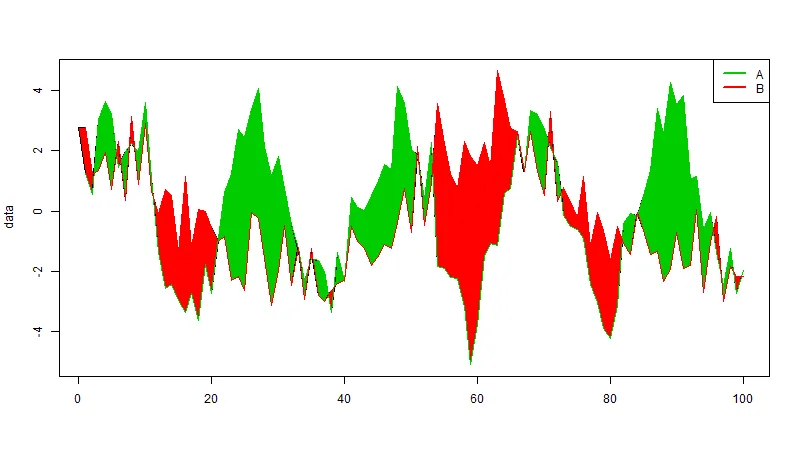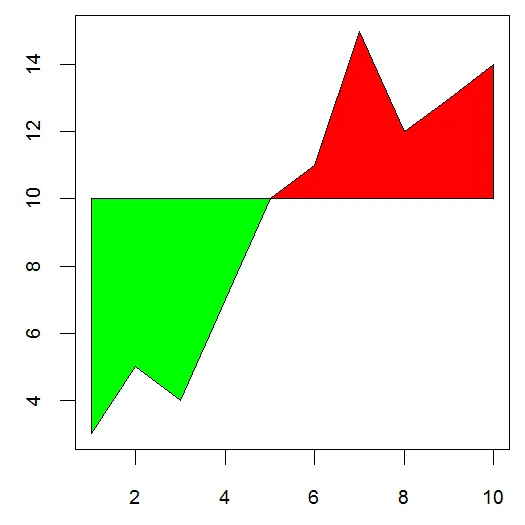我有一个矩阵(名为ichimoku),其中包含516行和2列,每一列都包含要绘制的值,目标是重新创建Ichimoku 策略的云。使用matpot,我能够绘制这两条曲线,但我想要的是在这两条曲线之间填充颜色。我有两个问题:
- 我尝试使用多边形来填充颜色,但它不起作用。我怀疑这是因为两个系列(senkouA 和 senkouB)在图上交叉多次,而不是一个始终大于另一个。
- 如果senkouA>senkouB,则希望该区域填充绿色;如果senkouB>senkouA,则希望该区域填充红色,但据我所读,多边形只能是一种颜色。
是否有其他函数可以帮助我实现所需的效果,即当senkouA>senkouB时,在senkouA和senkouB之间填充绿色区域,当senkouB>senkouA时,在senkouA和senkouB之间填充红色区域?
一目均衡表看起来像这样(第一列是先行A线,其他是先行B线) [,1] [,2]
[1,] 23323.62 23320.53
[2,] 23334.67 23328.71
[3,] 23334.11 23323.06
[4,] 23332.94 23323.06
...
这是我的 Matplotlib 函数(可以正常工作):
matplot(ichimoku,lty=1,lwd=1,pch=20,type="l",col=c("red","blue"))
和我的多边形函数(它不起作用):
polygon(c(1:516,516:1),c(senkouA,senkouB),col='green')


quantmod包吗? - user3710546quantmod不包含Ichimoku图表。但是这篇博客可能会很有趣。 - RHertel